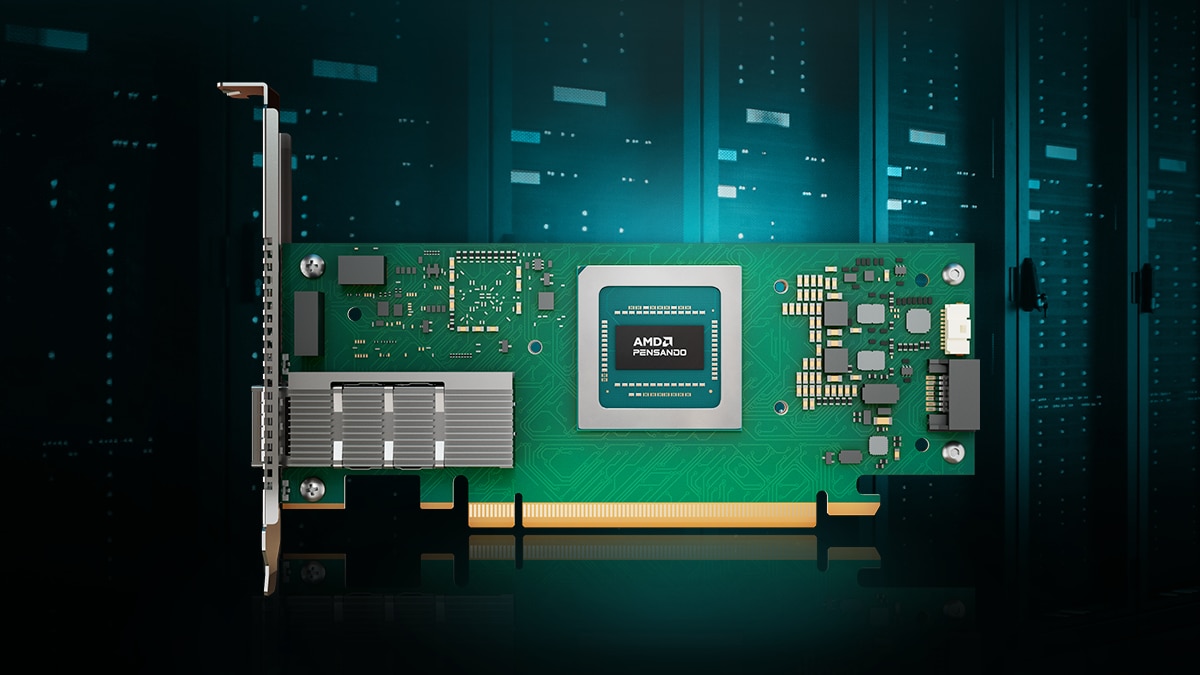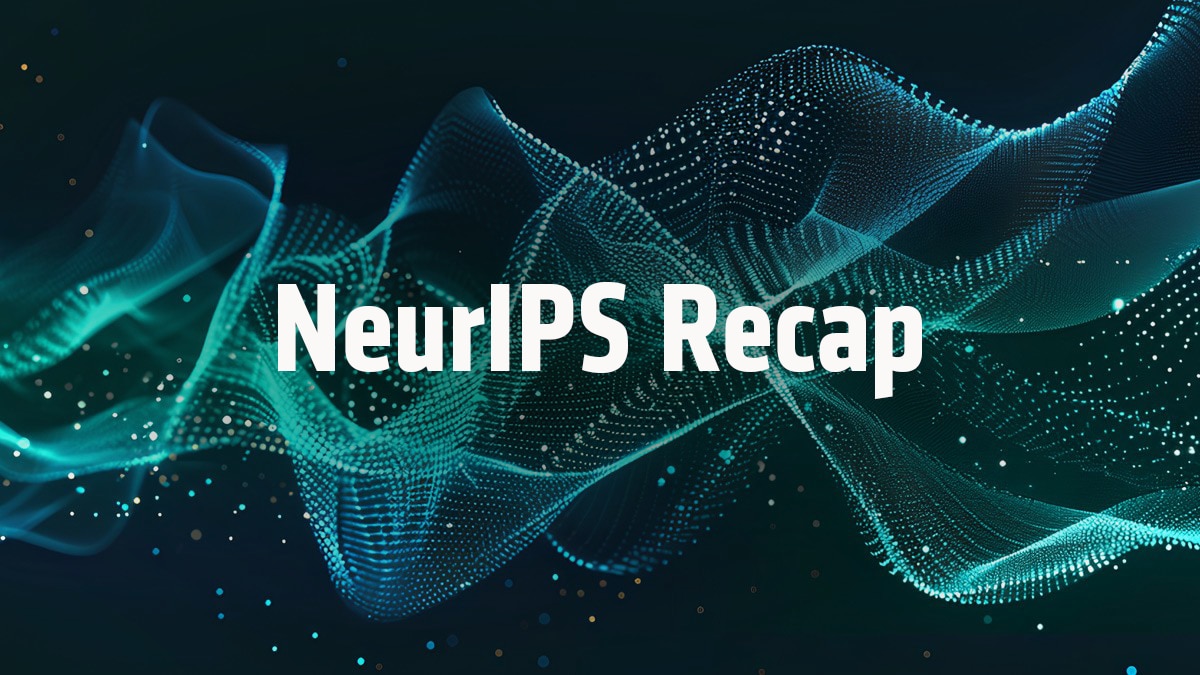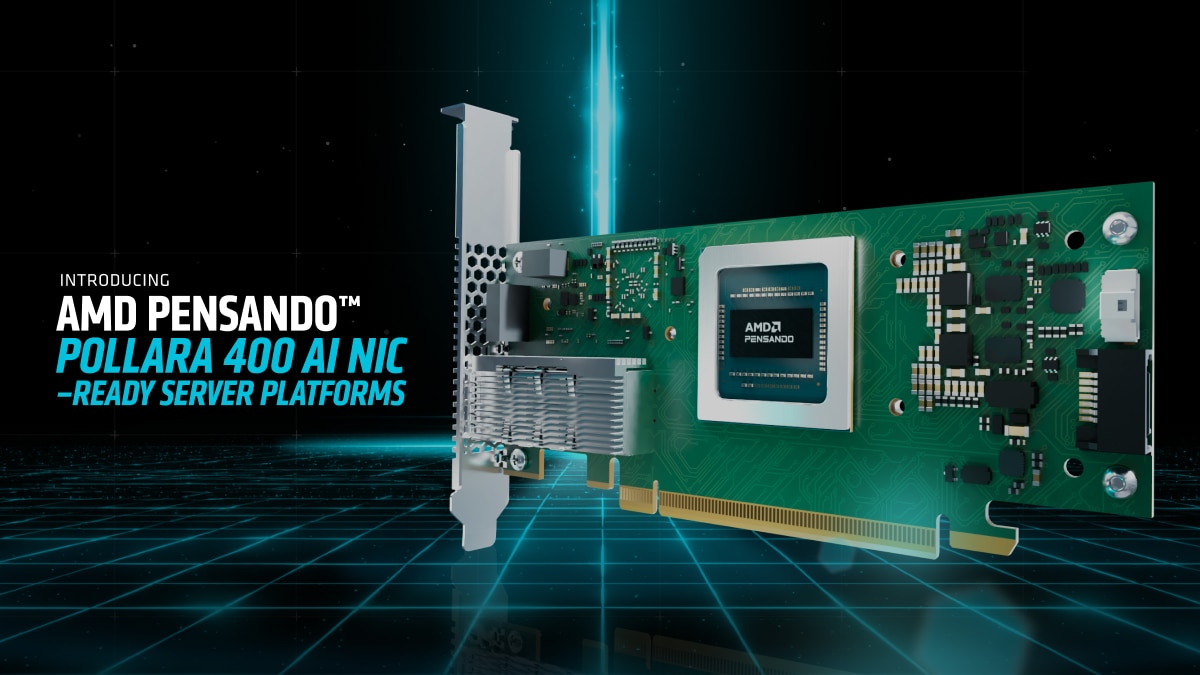Driving the Future of Cloud Performance: 5th Gen AMD EPYC™ CPUs Power Google Cloud’s C4D and H4D VMs
Nov 03, 2025

In April, Google Cloud introduced two new virtual machines powered by the 5th Gen AMD EPYC processor: the C4D series, engineered for consistent high performance in general-purpose workloads, and the H4D series for high-performance computing and compute-intensive applications. C4D achieved general availability in June across 12 regions, delivering up to a 40% increase in generational performance. Its robust performance and broad availability have driven rapid adoption among customers seeking to optimize their cloud workloads.
Cloud service providers such as Google have become significant customers for AMD EPYC, with AMD strategically aligning its processor advancements to address the evolving demands of both cloud and traditional on-premises environments. The 5th Generation EPYC processors offer notable improvements in core density, CPU clock speed, instructions per clock (IPC), and memory speed of up to 6400 MT/s, all working together to enable Google Cloud’s C4D instance to deliver consistent enterprise-grade performance to cloud customers. Full 512-bit AVX-512 support further enhances the performance of AI inference and encryption workloads. This collaboration underscores AMD and Google Cloud’s commitment to advancing cloud infrastructure.
C4D: Built for General-Purpose Excellence
Launched in April and now available across 12 regions, Google Cloud’s C4D VMs are engineered for consistent high performance across a wide range of general-purpose workloads. Powered by 5th Gen AMD EPYC processors, C4D delivers an average of 49% higher performance and 46% better performance-per-dollar compared to its predecessor C3D across five industries standard workloads1. Against the latest Intel-powered C4 VMs, C4D leads with average 56% performance and 67% performance-per-dollar advantages2.
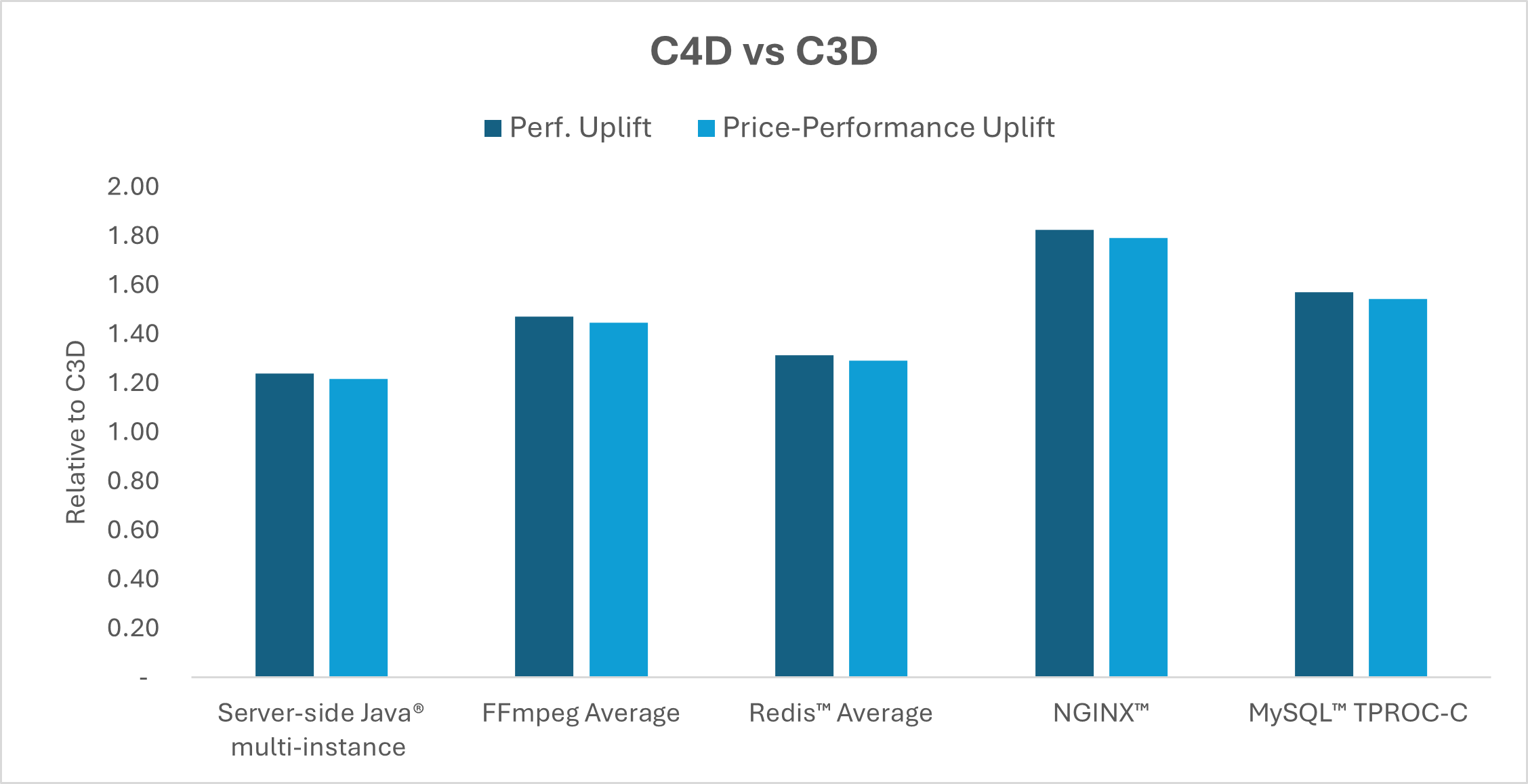
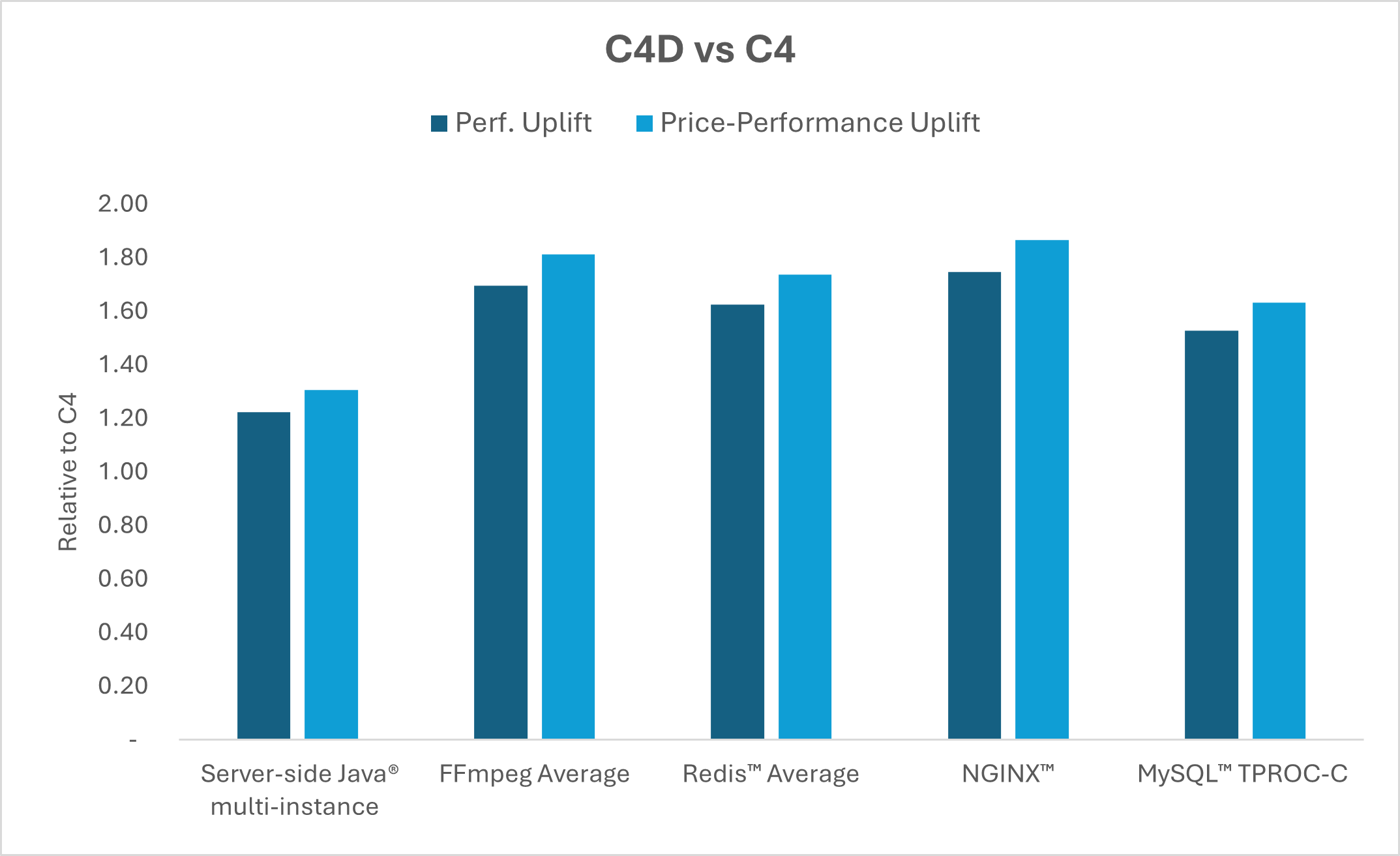
H4D: High-Performance Computing, Redefined
H4D VMs, built on the 5th Gen AMD EPYC CPU, feature 192 single-threaded cores and 200 Gbps Cloud RDMA networking—the first such deployment by Google Cloud. Across a set of typical HPC workloads— from manufacturing to weather forecasting, to health care and life sciences, H4D virtual machines show an average of almost 4x the performance of C2D VMs, Google Cloud’s previous generation AMD EPYC powered compute-intensive VM series3.
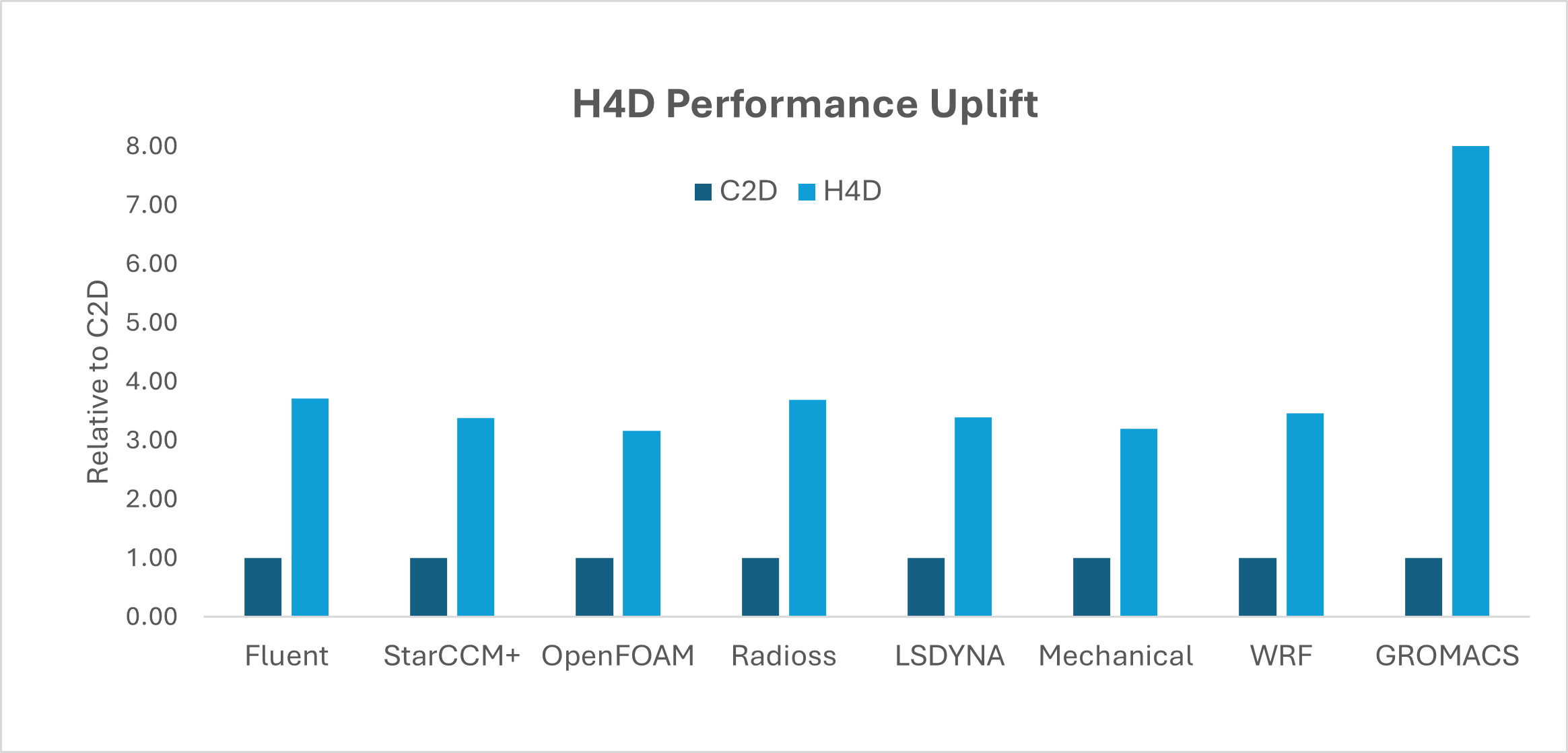
CPUs: Powering AI in the Cloud:
CPUs’ widespread enterprise presence makes them a natural platform for AI integration. As AI adoption accelerates, it is becoming integral to digital infrastructure. General-purpose workloads increasingly incorporate AI—either as embedded components or complementary functions—enhancing performance and productivity. CPUs have increasingly been employed for AI inference tasks such as:
- Classical ML and Recommendation systems: CPUs handle modest compute needs well, with efficient memory use and flexibility for conditional logic and sparse data.
- Generative AI: CPUs are efficient for small to medium language models and natural language processing (NLP) tasks.
- AI pipeline acceleration: CPUs excel at pre- and post-processing, including retrieval-augmented generation (RAG), filtering, and content moderation.
On the DLRM v2 benchmark, which represents recommendation engines, C4D shows ~81% performance improvement and ~66% performance per dollar increase compared to C3D4. Looking at the Llama 3.1 NLP benchmark, C4D brings an ~84% performance increase over C3D with a ~69% performance/dollar advantage5, and the Mini-LM small language model benchmark yields a ~50% performance improvement and a ~35% price-performance increase vs C3D on high CPU instances6.
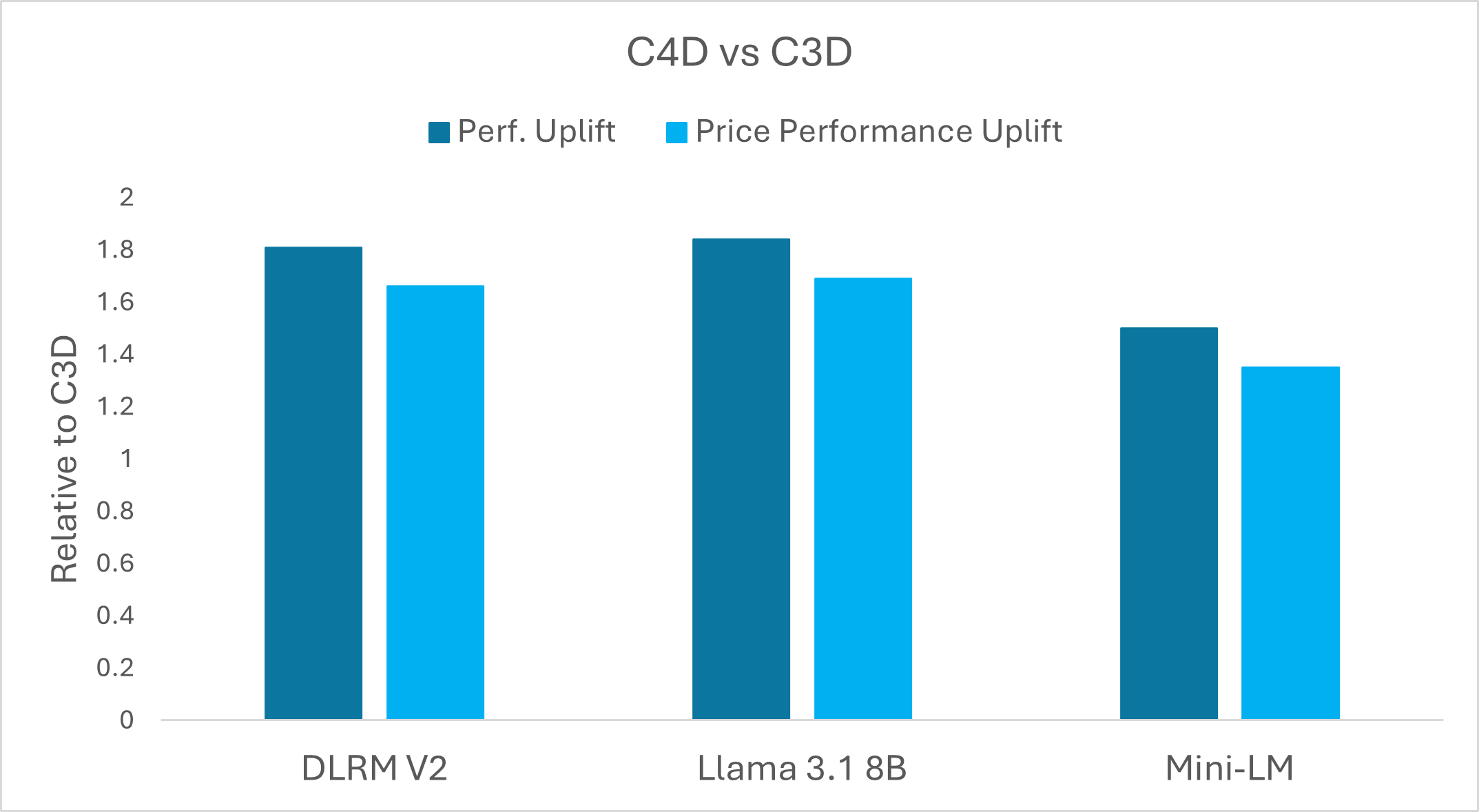
C4D instances, with their high memory bandwidth, large core counts, and AVX-512 support, are ideally suited for AI inference workloads—especially for models with modest compute needs and memory-resident datasets. From recommendation engines to NLP models, C4D delivers exceptional latency, throughput, and total cost of ownership — making it a compelling choice for enterprise-scale AI.
Innovation at Cloud Speed
The collaboration between AMD and Google Cloud has accelerated innovation, reducing C4D’s development cycle powered by 5th Gen EPYC to just seven months from CPU launch to instance availability. This speed reflects our shared commitment to delivering infrastructure that meets the evolving demands of a broad range of enterprise & AI workloads.
Whether you're upgrading from previous AMD CPU-powered VMs, modernizing legacy infrastructure, or migrating to the cloud, C4D and H4D offer exceptional performance and performance-per-dollar, powering the next generation of intelligent, efficient and scalable cloud computing.
Footnotes
Endnotes:
4. AMD EPYC Claim 9xx5C-013; c4d-standard-384 11,050.3 samples/sec, $17.76 hourly; c3d-standard-360 6,119.54 samples/sec, $16.36 hourly (81% performance uplift, 66% performance/$ uplift); instance on-demand pricing on us-central1 as of 10/29/2025
5. AMD EPYC Claim 9xx5C-014, c4d-standard-384 geomean 398.63 tokens/sec, $17.76 hourly; c3d-standard-360 216.49 tokens/sec, $16.36 hourly (84% performance uplift, 69% performance/$ uplift); instance on-demand pricing on us-central1 as of 10/29/2025
6. AMD EPYC Claim 9xx5C-015; c4d-standard-384 1,600.714 sentences/sec, $17.76 hourly; c3d-standard-360 1,064.776 sentences/sec, $16.36 hourly (50% performance uplift, 35% performance/$ uplift); instance on-demand pricing on us-central1 as of 10/29/2025
Endnotes:
4. AMD EPYC Claim 9xx5C-013; c4d-standard-384 11,050.3 samples/sec, $17.76 hourly; c3d-standard-360 6,119.54 samples/sec, $16.36 hourly (81% performance uplift, 66% performance/$ uplift); instance on-demand pricing on us-central1 as of 10/29/2025
5. AMD EPYC Claim 9xx5C-014, c4d-standard-384 geomean 398.63 tokens/sec, $17.76 hourly; c3d-standard-360 216.49 tokens/sec, $16.36 hourly (84% performance uplift, 69% performance/$ uplift); instance on-demand pricing on us-central1 as of 10/29/2025
6. AMD EPYC Claim 9xx5C-015; c4d-standard-384 1,600.714 sentences/sec, $17.76 hourly; c3d-standard-360 1,064.776 sentences/sec, $16.36 hourly (50% performance uplift, 35% performance/$ uplift); instance on-demand pricing on us-central1 as of 10/29/2025


